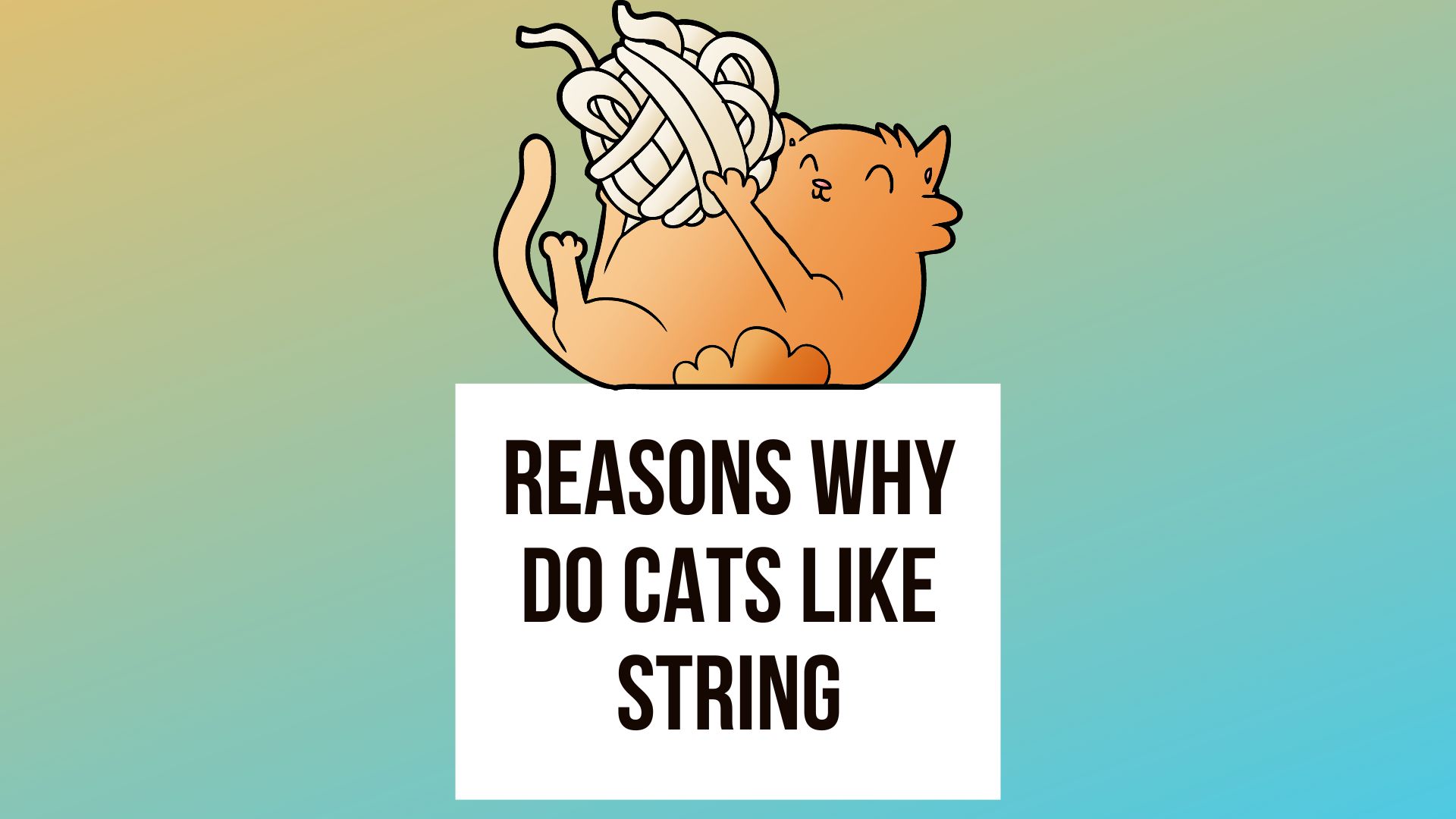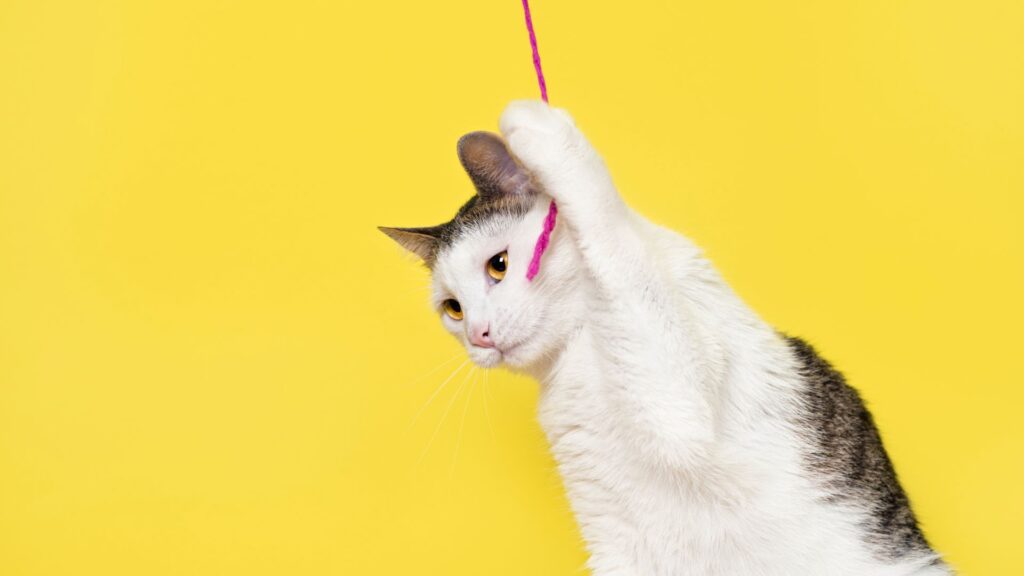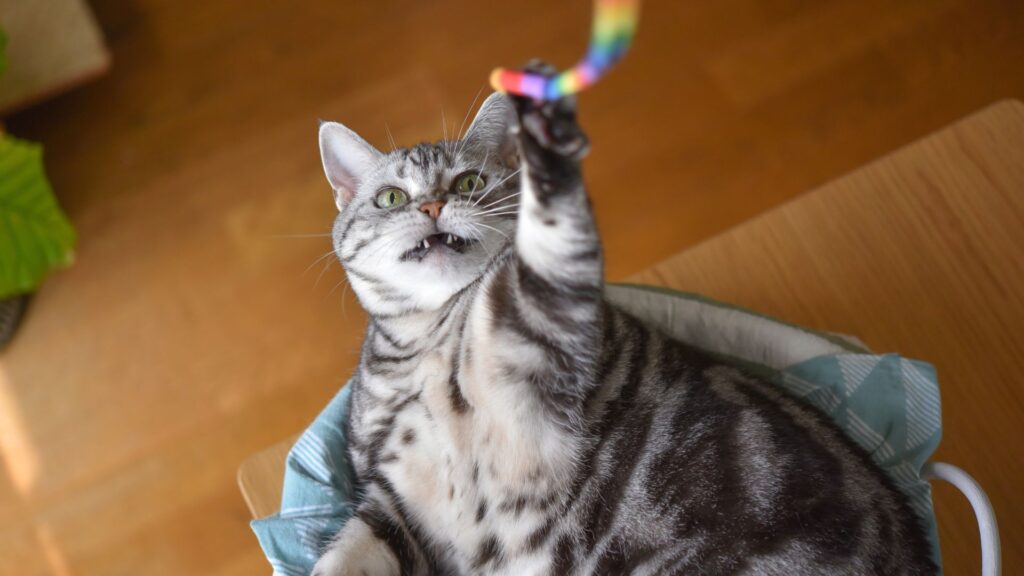
The easiest way to sum up the average cat’s relationship with the average string might be “it’s complicated.” Cats seem irresistibly drawn to string and most humans think they know exactly why.
But we don’t. A cat is attracted to string for reasons that most humans wouldn’t even think of, which is also why most of our assumptions about why cats like string are going to be wrong.
But in this article, we decode this commonly observed feline behavior for you. You will learn why cats really like string so much. You will also learn when your cat’s love for string may represent a danger.
Why Do Cats Like String
Feline researchers believe cats like string for two main reasons: string looks like the tail of the small rodents cats hunt in the wild and string usually moves when it is presented.
To really understand why cats are attracted to string, you need to understand the feline eye structure, which is what we will talk about next.
Learn About Cats Fascination With String
In this YouTube video, an experienced cat owner demonstrates a typical cat reaction to string and its attraction reasons.
You can watch the owner present string to his own cat in multiple ways – each time the string comes out, his cat cannot seem to resist chasing it, leaping after it, and pouncing on it.
Understanding the Unique Feline Eye Structure
String, yarn, thread – even shoelaces – are all worth a second look if you happen to be a feline.
But what is your cat seeing in that ball of yarn or string or shoelace that you are not? Why do cat eyes seem so keen to get closer when something looks like string?
The answer is found in the structure and functionality of feline eyes. There are four key traits that make your cat’s eyes function differently than your own.

1. The “glow in the dark” effect
As Animal Planet explains, your cat’s eyes are optimized for seeing in dim or low light conditions.
This is an essential trait for an animal that hunts mainly under the cover of darkness.
Have you ever noticed how your cat’s eyes seem to glow in the dark? This is due to a structure called the tapetum lucidum that your own eyes do not have.
The tapetum lucidum has one job: to catch all incoming light and reflect it back; like a camera flashbulb.
This causes whatever is being looked at to be seen in sharper focus.
2. Extraordinary pupil dilation
Cats have very large pupils. This is important because the size of the pupils gives cats keen vision under a wider range of light conditions.
In very bright light, your cat can constrict or narrow the pupils to avoid being literally flooded by incoming light and rendered temporarily blind.
But in low light, your cat can expand or dilate the pupils to allow most of the light across a near-panoramic range of vision. When a cat is hunting at night, the pupils will dilate until they look like twin spheres.
3. Inbuilt motion sensors plus binocular vision
Cats not only have a wider range of ocular light-sensing abilities, but they also have more rods in their eyes than people do, as Live Science points out.
The presence of these extra rods makes cat eyes more sensitive to even the slightest degree of movement or motion, such as the type a small prey animal might make while out foraging at night.
The extra rods help cats see these small movements to give them the edge when hunting.
And the large area of binocular overlap between the eyes gives cats a broader visual field, an advantage for an animal that needs finely tuned depth and distance perception.
4. That third eye membrane
Cats, like many birds, reptiles, mammals, have an extra protective membrane that covers the eyeball and sits inside the eyelid.
This membrane is translucent enough to let some light in but still thick enough to protect the eyeball from the elements and abrasion.
The nictitating membrane protects the cat’s eyes, but it allows for a faster response time to light, sound, or motion, once again giving the cat the advantage when hunting and also when being hunted.

A Game of Cat and Mouse Tail
Many feline researchers and behaviorists believe that string closely resembles the tiny hairless tails of common prey rodents like mice.
This may not seem contextually important where your cat gets catered meals from bags of kibble and cat food tins.
But in a wild setting, the mere glimpse of anything that looks like a rat or mouse tail would be enough to trigger your hunting cat to spring into action.
While your cat may never have hunted for a meal, doesn’t mean it can turn Off its wild hunting instincts.
Seeing a string, especially if it is moving, will create a chain reaction inside your cat that switches them into hunt-chase-pounce mode whether they happen to be hungry or not.
When Is Playing with String Dangerous for Cats
As the Paws charity explains, a string is not a safe toy for domestic pet cats.
In fact, allowing your cat to play with string, yarn, tinsel, ribbons, shoelaces or similar materials can be deadly.
At this point, you might wonder why so many cat toys feature long strings if these are dangerous.
The key here is that these types of toys are not designed for solo play. These are interactive toys. This means you will be holding or directing the toy and supervising your cat while you play together.
This way, if your cat gets into any trouble, such as trying to swallow the string or getting tangled up in the rope, you will be right there to step in and help.
Hidden Dangers of Cats and String
As the Cat Society highlights, cats should never be left unsupervised around sewing, knitting, or crafting supplies.
Here again, it is the cat’s wild hunting instincts that are to blame.
A cat that sees a length of string or yarn, for example, might not just pounce on it. The cat might then start chewing on it, just as the cat might chew on the tail of a prey animal to try to slow it down and catch it for supper.
And a cat that starts chewing on a length of rope, string, twine, or yarn could easily ingest it without any way to spit it out. This in turn could cause choking or develop into an internal blockage.
In the same way, a cat that gets tangled up in this type of material could easily cut off circulation to a paw, leg, or tail or even self-strangulate before help arrives.
It is also important to understand that if your cat sees rubber bands, thread, and twist ties, they may have the same wild instinct to chew and/or swallow these.
The Dodo warns against trying to extract the item or pull out the string yourself. This could cause fatal internal damage. Instead, take your cat to the feline veterinary urgent care center right away.

Hi, This is Alexa, and I love cats. This Website is a Complete Journal about how to travel with a cat and other information about Cat Health, Cat Training, Cat Behavior, Cat Foods and more. I hope you find it useful.
